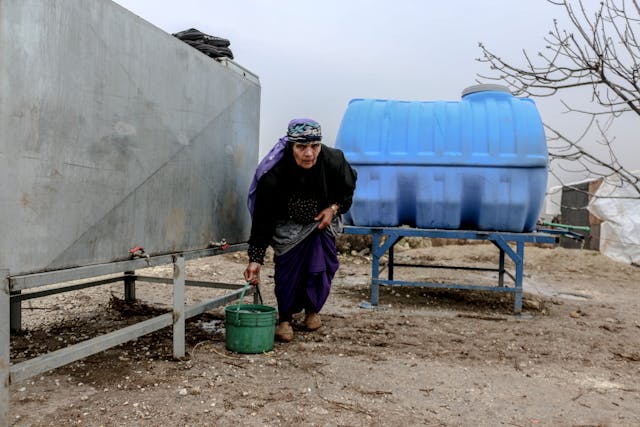Access to clean, safe drinking water is a persistent problem throughout the world, with more than 2 billion people (around 25% of the global population) lacking clean water in their homes. Around the same number of people do not have access to facilities in their homes where they can wash their hands with soap and water, while nearly 3.5 billion people around the world do not have properly managed sanitation facilities.
Water is a universal human need, but lack of access to clean water disproportionately affects women and girls.
The Water-Gender Link
A report by the United Nations Children’s Fund (UNICEF) and World Health Organization (WHO) indicates that in 70% of households around the world, the task of sourcing water is assigned to women and girls over the age of 15. Girls under 15 are also more likely than their male counterparts to be tasked with this job as well.
While this might sound like a simple responsibility to people who’ve always had the luxury of clean tap water at home, in many cases, it means making long journeys to wells, ponds, or rivers with buckets in hand, often alone or in small, vulnerable groups. Many women and girls risk physical and sexual assault en route. The job is also physically tasking, since carrying heavy buckets long distances or over uneven terrain increases the risk of injury. It’s also incredibly time-consuming: one report from water.org estimated that, globally, women and girls spend a shocking 200 million hours per day collecting water.
With so much time spent collecting water, there aren’t many hours left in the day for much else. Fetching water deprives women and girls of opportunities to go to school, earn an income, enjoy leisure or playtime, and work their own homes and farms. This task is one reason why women have lower agricultural productivity compared to their male counterparts—despite spending as much time working on farms, on average. Families and even entire communities have a more difficult time climbing out of poverty when their women and girls are held back in this way. It’s a vicious, self-perpetuating cycle.
The water-related challenges and risks that women and girls face are not limited to their roles as water bearers for their families, however. Water, sanitation, and hygiene (WASH) facilities are in short supply in many communities, and women and girls are often forced to share outhouses, toilets, latrines, and other facilities with men. This increases the risk of assault and deprives them of privacy, safety, and dignity, particularly when dealing with hygiene related to menstruation. Without gender-appropriate WASH facilities, the social stigma around menstruation persists, and the health consequences can be severe—for example, in 2019, WHO/UNICEF estimated that 1 million deaths per year are caused by or related to giving birth in unclean environments where infections can take hold.
It’s clear that water and gender are inextricably linked—and by improving access to clean water, we can make progress toward gender equity.
Recent Progress in Clean Water Access
The world has made some progress in increasing clean water access in recent years. Between 2015 and 2022, household access to clean water increased from 69% to 73%. In addition, access to adequate sanitation increased from 49% to 57%, and access to hygiene services increased from 67 to 75%. These increases represent important gains in the fight for universal clean water access, but there is still a long way to go before this goal is a reality.
Fortunately, Islamic Relief USA (IRUSA) and its partners are working to bring clean water and WASH facilities to communities in need around the world. In South Sudan, IRUSA has improved WASH infrastructure in Western Bahr El Ghazal, Warrap, and Central Equatoria. As Sudan’s civil war and displacement crisis has exploded, IRUSA had worked to distribute gender-sensitive hygiene kits for young girls, plus construct or rehabilitate hand pumps, hand-washing stations, and sanitation facilities in Blue Nile, Greater Kordofan, and Darfur.
Meanwhile, in Ghana, IRUSA is in the process of drilling 44 wells across the country—some in communities where people are forced to rely on the same surface water sources used by their animals. These wells are providing people with safe, clean water for drinking, bathing, and cooking, and in the process reducing incidences of waterborne illnesses, such as E. coli, cholera, typhoid, and guinea worm. The wells are also making it easier for families to source water, since they are conveniently located in the middle of villages. This reduces the amount of time that women and girls have to spend traveling to source water, thereby reducing their risk of assault and freeing their time for school, work, leisure, and play. It is a relatively simple intervention, but it’s remarkable how one well can improve public health, protect women and girls, enhance gender equality, and increase economic development for an entire community. If you’re interested in supporting these efforts, learn more or donate directly to IRUSA’s United for Clean Water in Africa campaign at irusa.org/africa. You can also read about other IRUSA water projects at irusa.org/water.
